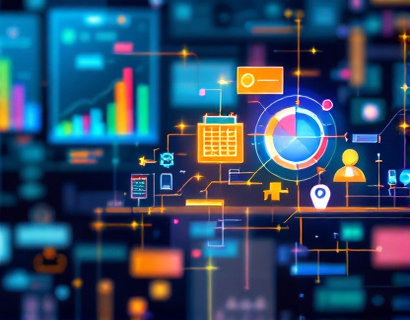AI-Powered Mental Health Navigator: Enhancing Access to Specialized Insights for a Diverse Audience
The integration of artificial intelligence in mental health services has opened new avenues for providing specialized insights and support to a wide range of users. An AI-powered chatbot designed to deliver accurate and safe information about psychiatric services and the mental health industry is revolutionizing how individuals, including children, students, educators, and healthcare professionals, engage with mental health topics. This innovative tool ensures that users receive content verified for accuracy and safety, fostering confident and responsible engagement with sensitive subjects.
Understanding the Need for Specialized Mental Health Information
Mental health is a critical aspect of overall well-being, yet it remains a topic shrouded in stigma and misunderstanding. The demand for reliable, accessible, and tailored information is higher than ever. Traditional sources of mental health information, while valuable, often fail to cater to the diverse needs of different user groups. Children, students, and mental health enthusiasts require content that is not only accurate but also age-appropriate and engaging. Similarly, healthcare professionals need up-to-date, specialized knowledge to provide the best possible care. An AI-powered chatbot addresses these needs by offering a versatile platform that adapts to the specific requirements of each user group.
AI-Powered Chatbot: A Versatile Tool for Mental Health Education
The AI-powered chatbot serves as a versatile tool, capable of providing specialized insights into various aspects of psychiatric services and the mental health industry. By leveraging advanced natural language processing and machine learning algorithms, the chatbot can understand and respond to a wide range of queries with precision and empathy. This technology ensures that users receive information that is not only accurate but also contextually relevant, enhancing the overall user experience.
Content Verification for Safety and Accuracy
One of the key features of this AI-powered chatbot is its robust content verification system. Before providing any information, the chatbot cross-references data from multiple trusted sources to ensure accuracy and safety. This is particularly crucial when dealing with mental health topics, where misinformation can have serious consequences. For children and students, the chatbot adheres to strict guidelines to ensure that the content is age-appropriate and free from harmful or inappropriate information. This verification process builds trust and confidence among users, encouraging them to engage with mental health topics more openly and responsibly.
Tailored Information for Diverse User Groups
The AI-powered chatbot is designed to cater to a diverse audience, each with unique information needs. For children and students, the chatbot provides simplified explanations and engaging content that makes learning about mental health both educational and enjoyable. Interactive elements such as quizzes and games can help reinforce key concepts and encourage active learning. For educators, the chatbot offers resources and insights that can be integrated into curricula, helping to destigmatize mental health issues and promote a supportive learning environment.
Healthcare professionals benefit from the chatbot's in-depth knowledge base, which covers the latest research, treatment options, and industry trends. The chatbot can provide detailed explanations of psychiatric conditions, treatment protocols, and best practices, serving as a valuable reference tool. For mental health enthusiasts, the chatbot offers a broader range of topics, from personal wellness tips to insights into mental health policies and advocacy efforts.
Enhancing User Engagement and Confidence
The AI-powered chatbot fosters confident and responsible engagement with mental health topics by providing users with the tools they need to navigate complex information. Through a conversational interface, users can ask questions, seek recommendations, and receive personalized responses. The chatbot's ability to understand and adapt to the user's level of knowledge ensures that the information is presented in a way that is both accessible and informative. This approach not only enhances user engagement but also empowers individuals to take an active role in their mental health journey.
Promoting Mental Health Awareness and Support
Beyond providing specialized information, the AI-powered chatbot plays a crucial role in promoting mental health awareness and support. By normalizing conversations around mental health and offering resources for those in need, the chatbot helps break down barriers and reduce stigma. For individuals who may be hesitant to seek help due to fear or misunderstanding, the chatbot serves as a welcoming and non-judgmental starting point. This is particularly important for children and students, who may not have the same level of understanding or access to mental health resources as adults.
The chatbot can also direct users to local support services, hotlines, and online resources, ensuring that they receive the help they need. For healthcare professionals, the chatbot can highlight community initiatives and collaborative opportunities, fostering a network of support and collaboration. By connecting users with relevant resources and services, the chatbot contributes to a more supportive and inclusive mental health ecosystem.
Innovative Features for Enhanced User Experience
The AI-powered chatbot incorporates several innovative features to enhance the user experience. One such feature is the ability to provide real-time updates on mental health research and news, keeping users informed about the latest developments in the field. This is particularly valuable for healthcare professionals who need to stay current with emerging trends and treatments. For students and mental health enthusiasts, the chatbot can curate a feed of relevant articles, studies, and news pieces, creating a personalized source of information.
Another innovative aspect is the chatbot's capacity to recognize and respond to emotional cues. Using sentiment analysis, the chatbot can detect when a user is expressing distress or concern and offer appropriate support and resources. This empathetic approach ensures that users feel understood and supported, further building trust in the platform. For children and students, the chatbot can identify when a user might be struggling and suggest age-appropriate coping strategies or encourage them to talk to a trusted adult.
Ensuring Inclusivity and Accessibility
Inclusivity and accessibility are core principles in the design and functionality of the AI-powered chatbot. The platform is designed to be user-friendly and accessible to individuals with varying levels of technological proficiency. For children and students, the chatbot uses simple language and visual aids to ensure that the content is easy to understand. The interface is also optimized for different devices, including smartphones and tablets, making it convenient for users to access information on the go.
For users with disabilities, the chatbot incorporates features such as text-to-speech and screen reader compatibility, ensuring that everyone can benefit from the platform. Additionally, the chatbot supports multiple languages, making it accessible to a global audience. By prioritizing inclusivity and accessibility, the chatbot helps bridge the gap in mental health education and support, reaching a broader and more diverse audience.
Building a Community of Support
The AI-powered chatbot not only provides individualized support but also fosters a sense of community among users. Through forums, discussion groups, and social features, users can connect with others who share similar experiences or interests. This community aspect is particularly beneficial for mental health enthusiasts and students, who can find peer support and share resources. For healthcare professionals, the chatbot can facilitate professional networks, enabling collaboration and knowledge sharing.
The chatbot moderates these communities to ensure a safe and respectful environment, adhering to strict guidelines to prevent misuse. By creating a supportive community, the chatbot helps users feel less isolated and more connected, which is essential for mental well-being. This sense of community also encourages users to engage more actively with mental health topics, promoting a culture of support and understanding.
Conclusion
The AI-powered chatbot represents a significant advancement in mental health support and education. By providing specialized insights, ensuring content accuracy and safety, and catering to a diverse audience, the chatbot empowers individuals to engage with mental health topics confidently and responsibly. Whether for children, students, educators, or healthcare professionals, the chatbot offers a valuable resource that enhances understanding and support in the mental health domain. As technology continues to evolve, the potential for AI to make a positive impact on mental health is vast, paving the way for a more informed and compassionate society.











































